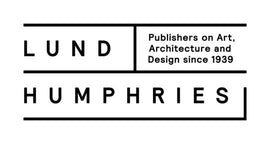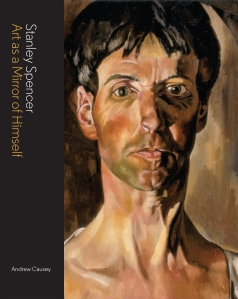Book of the Week: Stanley Spencer: Art as a Mirror of Himself by Andrew Causey
Stanley Spencer’s paintings aren’t always easy to like, but they are hard to ignore. As the sub-title of Andrew Causey’s new book (my Book of the Week) implies, Spencer’s paintings don’t set out to please, but rather to reflect the artist’s own singular internal vision. ‘Stanley Spencer explored fundamental issues of life with an urgency and persistence unique among British artists of his generation’, writes Andrew Causey, introducing his book and its subject.
The peculiarity of Spencer’s vision gives the paintings a disquieting edge. Spencer’s world has a strangeness which both alienates and fascinates us. His nude portraits of the late 1930s are uncomfortable in their forthright honesty, and yet difficult to forget. Many of the paintings are complex in their detail and the interaction of their figures, and hard to absorb in a single viewing. Despite the fact that his themes are universal human issues – life and death, sex and love, religion and community – I’ve never thought of Spencer’s work as very easy or accessible.
So the immediate connection I felt on viewing Spencer’s Burghclere mural paintings for the first time at Pallant House last week was quite unexpected. This series of paintings from 1927-32 depicting the realities of life as a soldier in the First World War (based on Spencer’s own experiences initially as a medical orderly at Beaufort Military Hospital and later at the Macedonian Front) is strangely comforting in its focus on ordinary, familiar routines: sorting laundry, filling tea urns, washing floors (you can almost smell the antiseptic on that spartan hospital linoleum), tea with bread and jam. The familiarity of these routine scenes means we almost overlook the scars of conflict, apparent at closer inspection: the frostbitten foot, the walking sticks, the mentally traumatized patients. And it initially masks the strangeness of the paintings, and the oddly unreal figures which populate them. They haunted me in a way I was not prepared for.
On 29th May we’re sponsoring a talk on Spencer by Fiona MacCarthy at Pallant House, to mark publication of our new book – a chance to hear more about Spencer’s strange life and visionary art. And once you’ve seen the Burghclere mural paintings, you can move on to the Stanley Spencer Gallery in Cookham, where a parallel exhibition of Spencer’s work in the aftermath of the First World War opened last week – an uneasy ‘Paradise Regained’.
Lucy Myers, Managing Director
Stanley Spencer: Art as a Mirror of Himself by Andrew Causey. February 2014. Hardback. Includes 85 colour and 30 b&w illustrations. 270 x 228 mm. 192 pages. 978-1-84822-146-8. £45.00/$90.00


